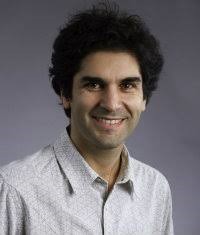Felipe Barra
Universidad de Chile
ZOOM LINK TO JOIN IN: http://s.ic.fo/QTD_OpenQSystems211020
Wednesday Oct 21, 2020 / 20:30-21:00 CEST
Thermodynamics with collisional processes and repeated interaction. Differences and applications of these frameworks.
Consider a thermodynamic process controlled by an external agent in which a quantum system is iteratively coupled to a thermal environment for a lapse of time and then decouple. During these time intervals, heat may flow to the system, but also work is performed on the system. This framework is called the “repeated interaction framework” [1,2]. We distinguish this framework from “collisional baths” or “collisional reservoirs” where a quantum scattering process takes place and where the spatial degrees of freedom of the “bath”, i.e., position and momentum are essential [3]. A scattering process occurs autonomously, and therefore if the “baths” are thermal, no work is performed in the process. We discuss applications [4] of these different thermodynamic frameworks for energy storing processes.
[1] F. Barra, Sci. Rep. 5 14873 (2015).
[2] F. Barra and C. Lledó, Phys. Rev. E 96 052114 (2017).
[3] J. Ehrich, M. Esposito, F. Barra and J.M.R. Parrondo, Physica A (accepted) (2019) [1904.07931].
[4] F. Barra, Phys. Rev. Lett. 122 210601 (2019).


Hi,
There are two points.
1 – because the harmonic oscillator has an unbounded spectrum you can pump energy in it without reaching an equilibrium state. But if you are interested in achieving some given charged state you do not necessarily care about that (although my point is that because it is an equilibrium state it is protected by the environment).
2- The interaction I discussed is specific to the case that the system is equal to the auxiliary systems (for instance they are all two-level systems.) If your oscillator interacts with other oscillators you are right!
Interesting… I only ask for the harmonic oscillator because, I believe, it is the next (probably) simple and integrable system that comes to mind after your qubits scenario. In fact, we recently wrote a manuscript in which we use harmonic oscillators as the ancillary systems to “charge” with coherence a qubit. However, we did not discuss the problem in the context of quantum batteries (https://arxiv.org/abs/2008.05200). Many thanks for your answer!
Hi Felipe, very nice talk! Thank you very much.
Does it make sense to use your approach to charge a harmonic oscillator battery? If the answer is yes, should I use counter-rotating terms in the interaction with the thermal bath like in your examples?